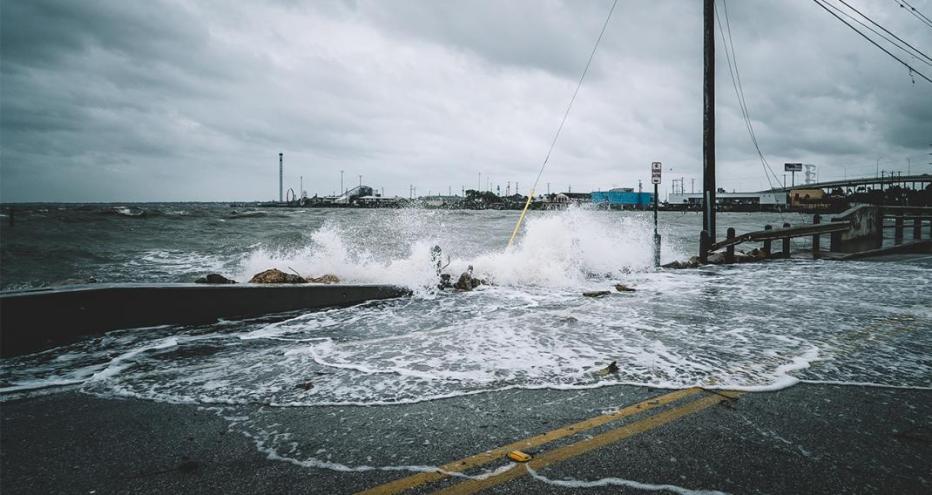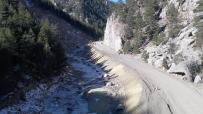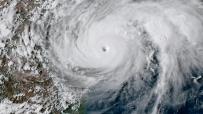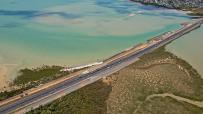



Jacobs. A world where you can.



As climate change threatens water security around the world, more communities are turning to water reuse as a resilient water supply solution and embracing the OneWater principle that all water has value. Jacobs has been supporting clients with water reuse programs for decades, beginning with the first applications of advanced wastewater treatment technologies in the 1960s. We provide our clients with a full range of services, from water reuse feasibility studies to design, construction and operations.



We’ve provided design-build services to the water sector for over 25 years and delivered more than 150 projects. We offer fully integrated design-build and design-build-operate capabilities to tackle the most complex water challenges and work in close collaboration with our clients.



For more than 30 years, Jacobs has been responsible for planning and implementing Lead and Copper Rule-related strategies which protect millions of people in the U.S. and Canada. Our work includes enhanced water quality monitoring strategies, sampling plan development, harvested pipe-scale analysis, lead service line inventories and replacement plans, corrosion control studies and the incorporation of equity and environmental justice considerations into compliance programs.



A curated selection of some of the top-listened to and trending podcast episodes from our popular If/When podcast series.



As a purpose-led company, we know we have a pivotal role to play in addressing the climate emergency. We consider this not only good business, but our duty to channel our technology-enabled expertise and capabilities toward benefitting people and the planet.



We work in partnership, delivering some of the most challenging, diverse and innovative projects and programs globally across multiple sectors. We integrate complex interfaces across planning, procurement and delivery to help unlock better social, environmental and economic outcomes from mega and giga projects.



As our clients navigate the digital transformation and growing cyber risks, we have positioned ourselves at the forefront of this growth, adding digital capabilities, products and tools to serve a growing set of customers.



Sit down with our visionary team of thinkers, dreamers and doers to see what a day in the life is like.



Together with our visionary partner, PA Consulting, we're establishing our position in high end advisory services, creating a springboard to expand in high value offerings beyond the core.


At Jacobs, we're challenging today to reinvent tomorrow by solving the world's most critical problems for thriving cities, resilient environments, mission-critical outcomes, operational advancement, scientific discovery and cutting-edge manufacturing, turning abstract ideas into realities that transform the world for good. With approximately $16 billion in annual revenue and a talent force of more than 60,000, Jacobs provides a full spectrum of professional services including consulting, technical, scientific and project delivery for the government and private sector.



The only certainty about the future is uncertainty. Resilience is an attribute of a smarter planet, and requires planning and adapting ahead of potential threats. We help our clients survive, recover, adapt and thrive.



Jacobs is working to help clients across the United States secure federal funding for projects that make our cities and communities more connected and sustainable. Working hand-in-hand with clients from coast to coast and everywhere in between, Jacobs develops bold, innovative solutions to address the nation’s toughest challenges.



Now more than ever, we appreciate the hard work, sacrifice and dedication of the medical profession in ensuring the health and safety of our communities.



Together, we are stronger. Together, we can transform the future.



Stories that capture our partnerships and innovative impact for a more connected, sustainable world



While the competitive Rio FIFA World Cup, Sochi Winter Olympics and the devastating Ebola health crisis dominated headlines in 2014, the world quietly hit another major milestone: more than half of the global population was living in urban areas for the first time.
During the next four years, urbanization would lead to the number of megacities, or cities with populations higher than 10 million, rising from 28 to 33 in 2018. Of these megacities, just about half lie at risk from sea level rise, increased storm surges and extreme weather events. In more rural populations, especially in low-lying island nations, climate variability further threatens life-sustaining activities.
In 2012, Hurricane Sandy made landfall, affecting 24 U.S. states and causing some $70.2 billion in damage. More than 15,000 flights into New York and other East Coast airports were canceled. New York subways were flooded with millions of gallons of seawater and sustained the worst damage in its more than century of service. Bridges and roadways flooded and were closed across the eastern seaboard.
Hurricane Sandy’s unprecedented destruction served as a wakeup call to New York City and other urban populations across the world – we need to strengthen our cities’ infrastructure to protect against a changing climate and intensifying extreme weather events, and refresh our focus on preparedness, response and recovery planning and delivery to emerge stronger post-events.
What if we showed you how Jacobs is providing comprehensive solutions to help communities prepare, adapt, mitigate and recover when facing weather-related mobility challenges?
in estimated global economic costs of extreme weather, including significant recovery, repair and future-proofing costs for transport
resilience-based projects in the Jacobs portfolio around the globe
“Anticipating and responding to both natural and man-made disasters or accidents to provide safe, reliable and resilient solutions is fundamental to how we deliver transport solutions to users and our clients.”
Kevin Slack
Jacobs Global Director of Transportation (Retired)

In the fall of 2013, devastating floods caused nearly $4 billion in widespread damage to critical infrastructure, transportation networks, homes and businesses across 24 counties in Colorado.
Especially destructive for mountain and rural corridors north of Denver, floods in the Big Thompson River canyon destroyed more than 10 miles of the U.S. Highway 34 roadway embankment, washed out homes and took the lives of two.
Due to road damages, residents in the canyon were cut off from emergency services and more than 2,000 people needed to be evacuated to safe areas via helicopter.
Looking for a long-term, resilient solution, the Colorado Department of Transportation, inspired by Colorado Governor Hickenlooper’s commitment to “build back better than before,” engaged us to design 23 miles of repairs to US 34, aimed at implementing a more resilient roadway and prioritizing emergency access for the residents in the next flood event.
As infrastructure is increasingly impacted by natural disasters and agencies are challenged to do more with less – incorporating flexible and innovative solutions is key to more resilient upgrades, and quicker, lower-cost repairs in the event of future devastation. We implemented several innovative and resilient solutions on the now multi-award-winning project, setting a model for future-focused transportation improvements aimed at enhancing safety. Discover more here.

At an estimated $125 billion in damage, Hurricane Harvey is the second-most costly hurricane along the mainland since 1900. Causing about $125 billion in damage, Hurricane Harvey ranks as the second-most costly hurricane to strike mainland U.S. since the early 1900s.
The disastrous storm brought a normally bustling Houston transportation hub to a standstill. Floods soaked and inundated infrastructure, closing three ports and deeming more than 780 roadways impassable – causing headaches for commuters and the cargo industry alike. Nearly 10% of the U.S. trucking industry was estimated to experience impacts from the storm at its peak. The Houston Ship Channel lost three feet of depth – previous studies found that losing just one costs the economy up to $280 million annually.
The Federal Emergency Management Agency (FEMA) launched one of its most historic disaster responses ever, which continues today. Our joint venture company, CCPRS, continues to provide technical expertise to support FEMA’s Hurricane Harvey Public Assistance Program, which awards grants to state and local governments, and certain private non-profit entities.
Our work encompasses engineering, cost estimating, construction management and other technical services to support disaster response and recovery efforts including debris removal, emergency protective measures and permanent restoration of damaged infrastructure, including roadways. The program also encourages protection of damaged facilities from future events by providing assistance for hazard mitigation measures during the recovery process. Under a preceding concert, we provided more than $500 million in public assistance, recovery operations, construction and project management and technical services, including recovery support to Puerto Rico in response to Hurricane Maria. Discover more here.

When it storms in New Zealand, low-lying coastal areas, like those along the West Auckland coast, can quickly become inundated, or flooded, by the sea. Sitting along this vulnerable coast is Auckland’s Northwestern Motorway (SH16). Built in the 1950s on soft marine mud, coastal erosion and land subsidence over the years has caused the motorway to slowly sink, leaving it particularly susceptible to flooding, especially in high tides.
To safeguard and futureproof SH16 against flooding and coastal erosion, the New Zealand Transport Agency procured a strategic alliance team, including us, to raise and widen 4.8 kilometers of the existing twin three-lane motorway.
Careful environmental consideration underpinned the effort – which included geotechnical, structural, roadway, environmental and drainage design to secure the roadway – as SH16 runs along the sensitive coastal environment of the Motu Manawa Pollen Island Marine Reserve. Doing our part to impact the reserve as little as possible, we undertook the detailed geometric design and traffic services of permanent and temporary alignments of the motorway, interchanges, and pedestrian and cyclepaths to minimize the project’s footprint in the reserve. Additionally, the stormwater drainage system, designed by the project team, significantly narrowed the roadway’s embankment width, reducing costly ground improvement works and required fill materials above sensitive environmental areas, and ultimately secured an estimated $50 million in savings. We also prepared the suite of revised environmental management plans for the design and construction of the effort, including taking critical cues from existing project efforts in relation to managing sensitive coastal and marine reserve areas and community concerns.
Now complete, the widened SH16 roadway is bolstering the coast’s ability to mitigate flooding and subsidence, and offers citizens improved travel time reliability, improved pedestrian and cyclist access and more direct bus trips thanks to the addition of dedicated bus shoulder lanes along the roadway. And, SH16 represents a key connection in the Western Ring Route, which upon expected completion in 2021, will offer an alternative route around Auckland for improved network efficiency and regional growth.